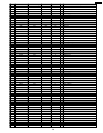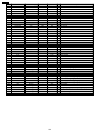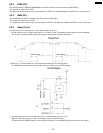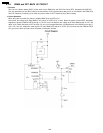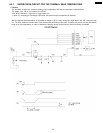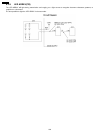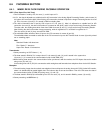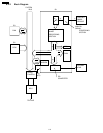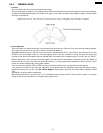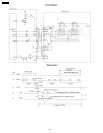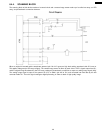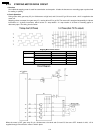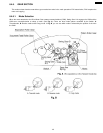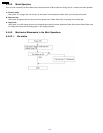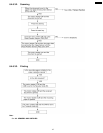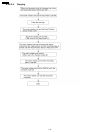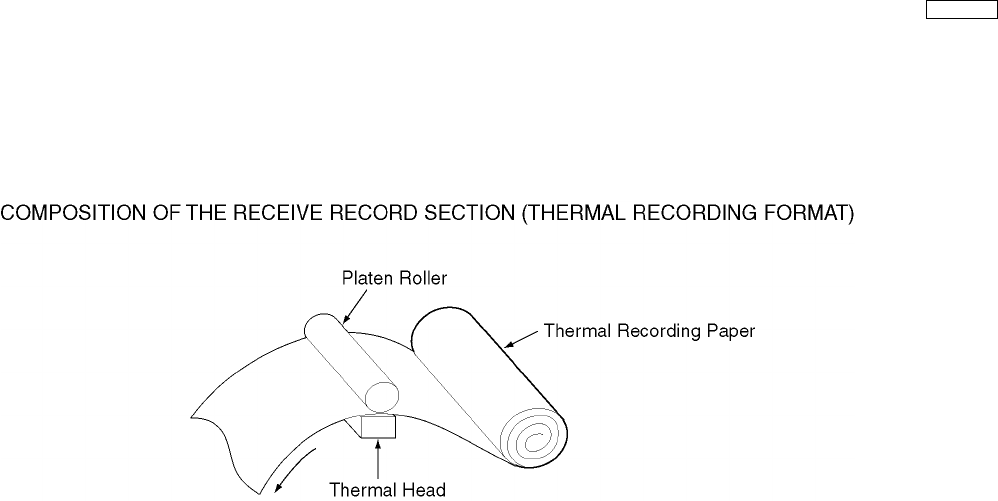
6.4.3. THERMAL HEAD
1. Function
This unit utilizes state of the art thermal printer technology.
The recording paper (roll paper) is chemically processed. When the thermal head contacts this paper it emits heat momentarily,
and black dots (appearing like points) are printed on the paper. If this continues, letters and/or diagrams appear, and the original
document is reproduced.
2. Circuit Operation
There are 9 driver ICs aligned horizontally on the thermal head and each one of these ICs can drive 192 heat emitting registers.
This means that one line is at a density of 192×9=1728 dots=(8 dots/mm).
White/Black (white=0, black=1) data in one line increments is synchronized at IC1 pin 166 (THCLK), and sent from IC1 pin 163
(THDAT) to the shift register of the ICs. The shift registers of the 9 ICs are connected in series, and upon the shift of dot
increment 1728, all the shift registers become filled with data, and a latch pulse is emitted to each IC from IC1 pin 167 (THLAT).
With this latch pulse, all the contents of the shift registers are latched to the latch registers. Thereafter, through the addition of
strobes from the IC1 pins (159, 160) only black dot locations (=1) among latched data activates the driver, and the current
passes to heat the emitting body causing heat emission.
Here, the three line strobes, STB1 to STB2, impress at intervals of 9.216 msec, as required for one-line printout.
The sequence is shown on the next page. [Moreover, for the strobe width, the thermistor value inside the thermal head is
detected according to IC1 pin 207. (See 6.3.1. Block Diagram.) Depending on that value, the strobe width is recorded in ROM
(IC2).
Accordingly, the strobe width is determined.
When the thermal head is not used, the IC1 (170, THON) becomes low, Q8 turns OFF, Q13 turns OFF, and the +24 V power
supply for the thermal head driver is not impressed to protect the IC.
111
KX-FT21RS



